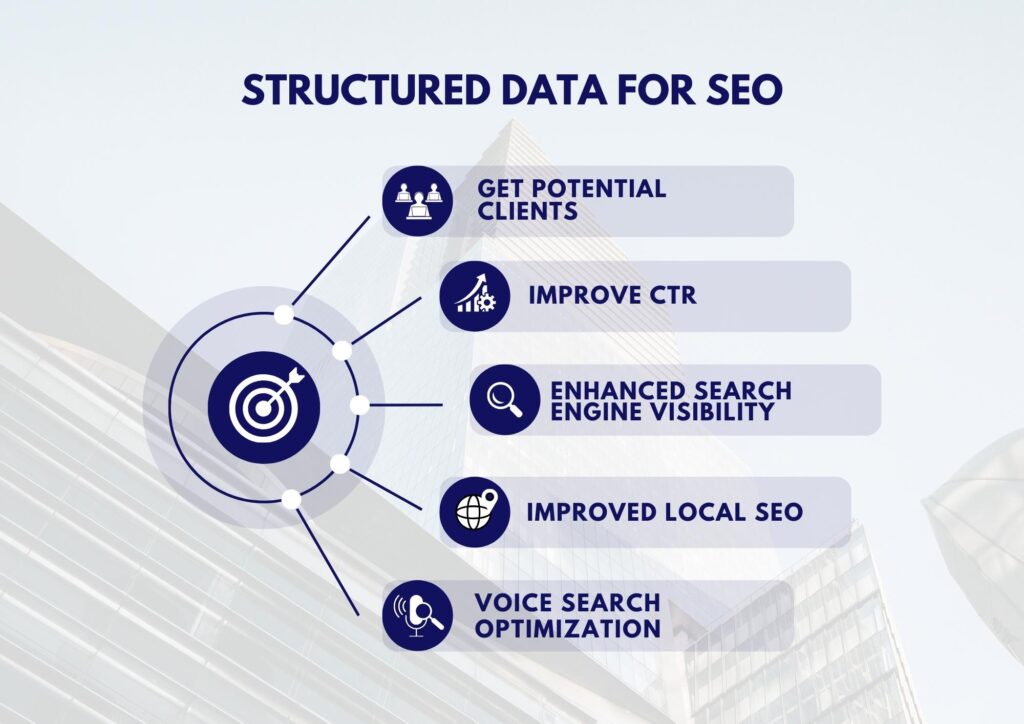Structured data is a standardized format for providing information about a page and classifying the page content. Here’s how you can understand and implement structured data for SEO:

✅Understanding Structured Data
Structured data uses a specific vocabulary for tags and is usually implemented in the form of JSON-LD, Microdata, or RDFa. The most commonly used speech for structured data is Schema.
✅Benefits of Structured Data for SEO
✔Rich Snippets: Enhances your search listings with additional information like ratings, images, and more.
✔Knowledge Graph: This helps Google understand your content, which can be included in the Knowledge Graph.
✔Improved CTR: Attractive search results can lead to higher click-through rates.
✔Voice Search Optimization: This helps voice search assistants understand and deliver your content.
✅Types of Structured Data
✔Organization Schema: Provides information about a company, like name, logo, and contact info.
✔Local Business Schema: For local businesses to provide details like address, hours, and services.
✔Product Schema: Details about products, including price, availability, and reviews.
✔Article Schema: Used for news and blog posts to enhance the listing with a headline, image, and publication date.
✔Event Schema: Information about events, such as date, location, and ticket information.
✔Recipe Schema: For recipe pages, include ingredients, cooking time, and nutritional info.
✅Steps to Implement Structured Data
✔Identify the Right Schema: Choose the appropriate schema types that best represent your content from schema .
✔Generate Structured Data: Use a structured data generator or manually write the JSON-LD, Microdata, or RDFa code.
✔Add the Code to Your Webpage: Place the structured data in the HTML of your webpage, typically in the <head> section for JSON-LD or alongside HTML content for Microdata/RDFa.
✔Test Your Structured Data: Use tools like Google’s Rich Results Test or the Structured Data Testing Tool to ensure there are no errors.
✔Monitor Performance: Use Google Search Console to track the performance and any issues with your structured data.



